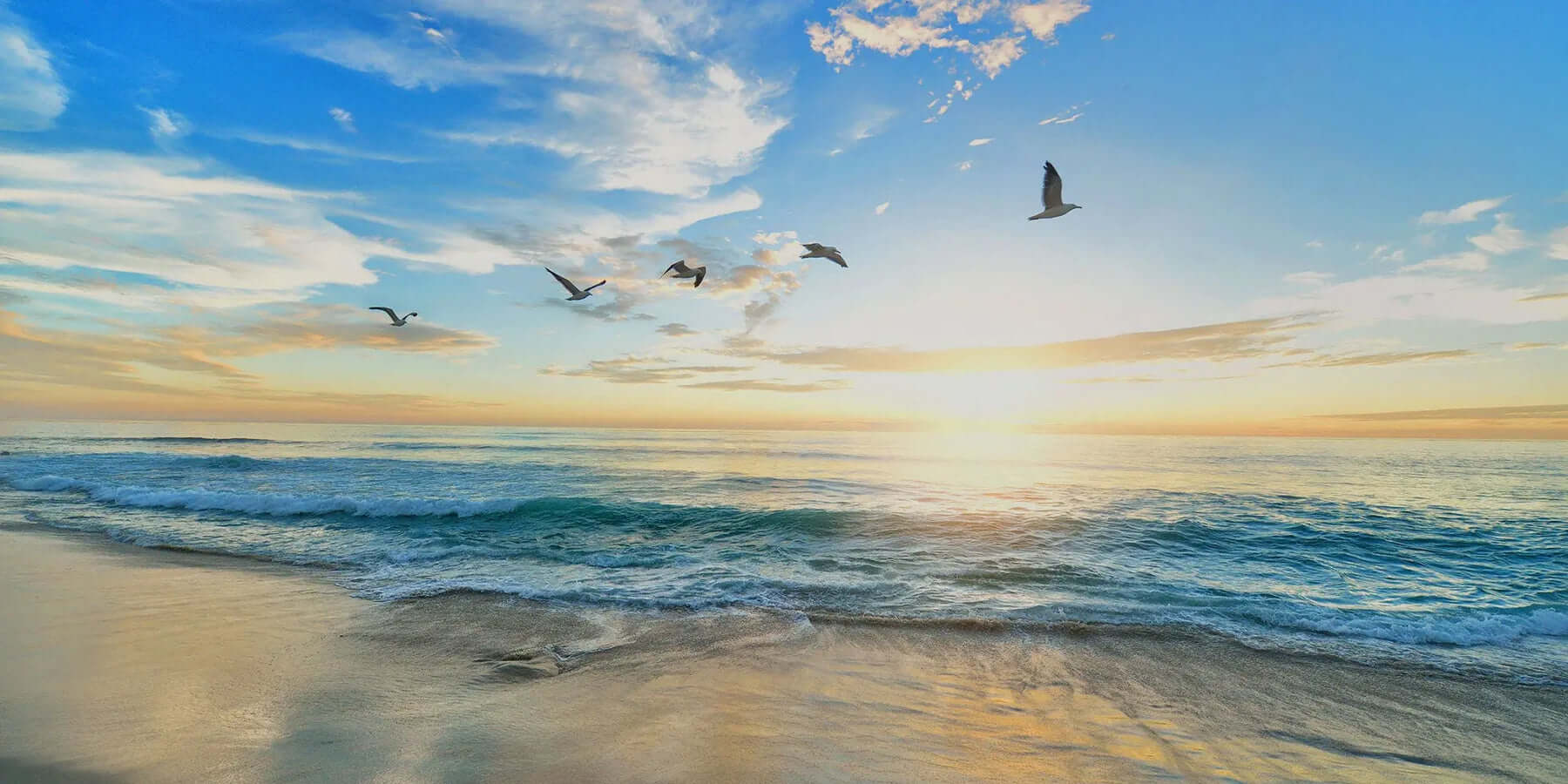Have you ever dreamt of weightlessly gliding through a crystal-clear underwater world, surrounded by dazzling marine life? Scuba diving offers a chance to do just that, transforming you from a landlubber into an explorer of a hidden realm teeming with fascinating creatures.
Destinations for Unforgettable Marine Life Dives
Our planet boasts a staggering array of dive destinations where encountering a kaleidoscope of marine creatures is practically guaranteed. Here are some top picks, brimming with incredible biodiversity.
1. Great Barrier Reef, Australia:

World-renowned for its vast coral reefs and marine biodiversity, the Great Barrier Reef offers encounters with vibrant coral gardens, majestic turtles, reef sharks, and colorful fish species. Ideal for diving year-round, though the best visibility is often from April to November.
2. Raja Ampat, Indonesia:

Situated in the heart of the Coral Triangle, Raja Ampat boasts some of the highest marine biodiversity on the planet. Divers here can marvel at intricate coral formations, encounter elusive species like pygmy seahorses and walking sharks, and swim alongside majestic manta rays. The best time to explore is from October to April.
3. Palau:

With its pristine waters and diverse marine ecosystems, Palau is a diver's paradise. From exploring WWII wrecks to drifting through coral canyons, divers can encounter sharks, mantas, turtles, and an array of colorful reef fish. The dry season from November to April offers the best conditions for diving.
4. Galápagos Islands, Ecuador:

Known for its unique and endemic species, the Galápagos Islands offer thrilling diving experiences with encounters with hammerhead sharks, marine iguanas, and playful sea lions. The best time to visit is during the dry season from June to November for optimal underwater visibility.
5. Fiji:

Renowned for its soft coral reefs and vibrant marine life, Fiji offers diverse diving experiences, from drift dives along steep walls to encounters with sharks, turtles, and colorful reef fish. The dry season from April to October is ideal for diving, with calm seas and excellent visibility.
6. Komodo National Park, Indonesia:

Famous for its rugged landscapes and fearsome Komodo dragons, Komodo National Park also boasts spectacular underwater scenery. Divers can explore vibrant coral reefs and encounter mantas, sharks, and other pelagic species. The best time to visit is from April to August for optimal conditions.
7. Belize Barrier Reef, Belize:

Home to the second-largest barrier reef system in the world, Belize offers diverse diving opportunities, including the iconic Great Blue Hole. Divers can spot sharks, rays, and colorful reef fish against a backdrop of stunning coral formations. The dry season from November to April is ideal for diving.
8. Socorro Island, Mexico:

Known as the "Galápagos of North America," Socorro Island offers thrilling encounters with large pelagics such as giant manta rays, dolphins, and various shark species. Diving here is best from November to May for calm seas and optimal visibility.
9. Hawaii, USA:

Renowned for its volcanic underwater landscapes, diverse marine life, and manta ray night dives. Best time to visit varies by island, but generally year-round.
10. South Africa:

Famous for its shark diving experiences, including cage diving with great white sharks, and encounters with marine mammals like seals and dolphins. Best time to visit varies by location, but generally from June to September.
This is just a taste of the incredible dive destinations around the world. With a little research, you can find the perfect location to encounter the marine life that sparks your curiosity!
Meeting Ocean Residents
Gear up and get set to dive into the depths, where extraordinary encounters with ocean residents await! Imagine the thrill of gliding alongside graceful sea turtles, feeling the rhythm of the ocean as they navigate effortlessly through their underwater realm. And there's no experience quite like sharing a moment of pure joy with playful dolphins, as they dance and dart around you, welcoming you into their world with boundless energy and curiosity.
But the excitement doesn't stop there! Prepare to be awestruck by the majestic presence of rays gracefully soaring through the water, their elegant movements leaving you breathless with wonder. And yes, we'll even introduce you to the ocean's legendary guardians – sharks! Despite their reputation, encountering these magnificent creatures up close fills you with a profound sense of respect and admiration for their vital role in the marine ecosystem.
As you immerse yourself in the vibrant coral gardens, you'll be surrounded by a kaleidoscope of colors, as schools of vibrant fish species dart and weave through the intricate reef formations. It's an experience that ignites your senses and leaves an indelible mark on your soul, inspiring you to protect and preserve our precious oceans and the incredible creatures that call them home.
Embracing Responsible Diving Practices
Embracing responsible diving practices isn't just about enjoying the underwater world – it's about protecting it for future generations. As ocean enthusiasts, it's crucial that we prioritize ethical interactions with marine life, ensuring that our presence doesn't harm the delicate ecosystems we admire. This means following simple guidelines like maintaining a respectful distance from marine animals, allowing them to move freely and without disturbance. By resisting the temptation to touch or chase after them, we can minimize stress and ensure that our encounters remain positive for both us and the creatures we encounter.
Underwater, our actions matter more than ever. As stewards of the sea, it's our responsibility to dive with care and consideration, always mindful of the impact we have on the marine environment. By adhering to these principles of respectful behavior, we not only preserve the beauty of the underwater world but also pave the way for sustainable diving practices that benefit both marine life and divers alike. So, let's dive in with respect and reverence, embracing the privilege of exploring the ocean's wonders while ensuring they thrive for generations to come.
Encounters with Gentle Giants

Sharing the water with massive marine animals like manta rays and whale sharks is an awe-inspiring experience. Here are 10 tips to ensure a safe and respectful encounter:
1. Stay Calm: Sudden movements can startle these gentle giants.
2. Maintain Distance: Admire them from a safe distance and avoid blocking their path.
3. No Flash Photography: The bright flashes can disorient them.
4. Choose Responsible Operators: Support dive companies committed to sustainable practices.
5. Be Buoyant: Maintain proper buoyancy to avoid kicking up sand and disturbing the environment.
6. Minimize Noise: Loud noises can disrupt their communication.
7. No Feeding: Feeding alters their natural behavior and can make them dependent on handouts.
8. Respect the Environment: Be mindful of your fins and avoid touching coral reefs.
9. Leave No Trace: Take only memories and leave only bubbles.
10. Support Conservation Efforts: Consider donating to organizations dedicated to protecting these majestic creatures.
The Thrill of Swimming with Sharks

Scuba diving allows you to witness their grace and power firsthand. Here are 5 common misconceptions about shark behavior to debunk:
1. Sharks are mindless killing machines: Contrary to popular belief, sharks are not mindless predators. They play a crucial role in maintaining the balance of marine ecosystems and often avoid confrontations with humans.
2. Sharks can smell a drop of blood from miles away: While sharks do have a keen sense of smell, the idea that they can detect a drop of blood from miles away is an exaggeration. Their sense of smell is impressive but not superhuman.
3. Sharks are always on the hunt: Sharks don't spend all their time actively hunting for prey. Like many other animals, they conserve energy by resting and conserving their resources until food becomes available.
4. Sharks target humans as prey: Despite sensationalized media portrayals, sharks do not view humans as natural prey. Most shark attacks are cases of mistaken identity, with sharks mistaking humans for their usual prey items such as seals or fish.
5. Sharks are invincible predators: While sharks are apex predators and play a vital role in marine ecosystems, they are not invincible. They face numerous threats from human activities such as overfishing, habitat destruction, and pollution, which have led to declines in shark populations worldwide.
Exploring Colorful Coral Reefs

Imagine being surrounded by a rainbow of colors as you explore these vibrant underwater landscapes. From tiny fish darting through the coral to majestic sea turtles gliding gracefully by, every moment is a feast for the senses.
But these coral reefs aren't just pretty to look at – they're essential for our planet's health. They provide homes for countless marine creatures, protect our coastlines, and support local communities. Sadly, coral reefs are under threat from things like climate change and pollution. That's why it's important for us to take care of them and dive responsibly. By practicing sustainable diving and supporting coral conservation efforts, we can help ensure that these beautiful reefs thrive for generations to come.
Planning for Your Marine Life Dive

Ready to embark on your own underwater adventure? Here are some things to consider:
-
Dive Certifications: Before you dive into the depths, it's essential to ensure you have the right certifications for your chosen destination. Different dive sites may have specific requirements based on their depth, currents, and underwater terrain. For instance, some locations may require an Advanced Open Water certification for deeper dives or specialized certifications for wreck or cave diving. Research the dive site requirements beforehand and make sure your certification level matches the dive you plan to undertake. If you're not certified yet, don't worry! Many dive operators offer beginner courses and certification programs to get you started on your underwater journey.
-
Choosing Dive Operators: When selecting a dive operator, it's essential to find one that shares your commitment to marine conservation and responsible diving practices. Look for operators with a strong emphasis on safety, environmental stewardship, and sustainable tourism. Check reviews from other divers, ask about the operator's conservation initiatives, and inquire about their approach to wildlife interactions. A reputable dive operator will prioritize the well-being of marine life and ensure that dive experiences are conducted in an ethical and eco-friendly manner.
-
Packing Essentials: As you prepare for your marine life dive, don't forget to pack the essentials to enhance your underwater experience. A well-fitting wetsuit will keep you comfortable and protected from the elements, while sunscreen will shield your skin from the sun's rays during surface intervals. Don't miss the opportunity to capture your underwater memories – bring along a waterproof camera or GoPro to document the incredible marine life you encounter. And remember, while it's tempting to pack everything, try to travel light and only bring what you'll truly need for your dive adventure. With proper planning and preparation, you'll be ready to dive into the wonders of the underwater world with confidence and excitement!
Preserving Underwater Memories with Conquest Maps
We would love to introduce our new Push Pin Map specifically designed for scuba enthusiasts! At Conquest Maps, we've always been dedicated to helping travelers track their adventures and preserve their cherished memories. With our new scuba dive site map, you can take your underwater experiences to the next level by documenting and reliving your marine life encounters in a unique and personalized way.
Imagine being able to track each dive site you've explored around the world, from the vibrant coral reefs of the Great Barrier Reef to the thrilling shark encounters of the Galápagos Islands. With our scuba dive site map, you can mark each location with a push pin, creating a visual representation of your underwater journeys that you can proudly display in your home or dive center.
Whether you're a seasoned diver with a lifetime of underwater memories or a newbie just starting your diving journey, our scuba dive site map is the perfect way to document and share your love for the underwater world. So dive in, explore, and let Conquest Maps help you preserve your underwater memories for years to come!









Share:
Conquest Maps vs. Push Pin Travel Maps: Which Map Should I Buy?
How to Plan a Family-Friendly Scuba Diving Vacation